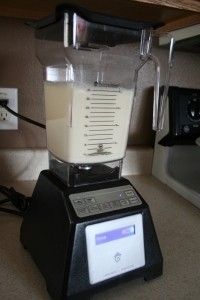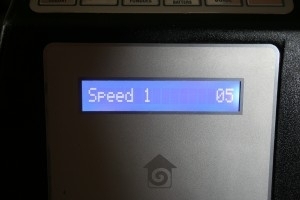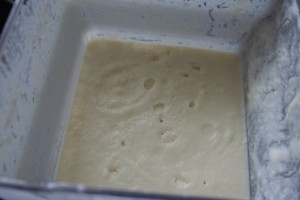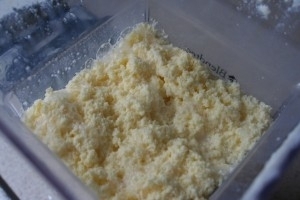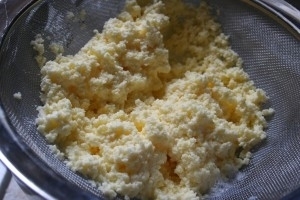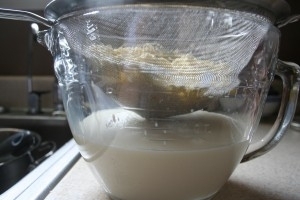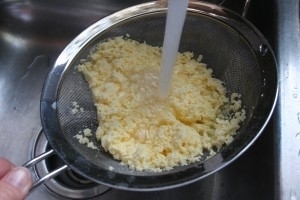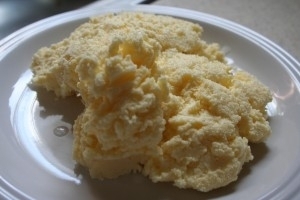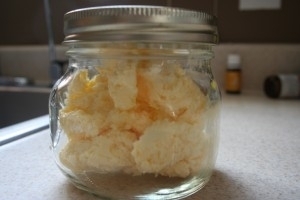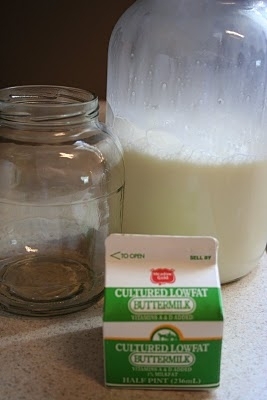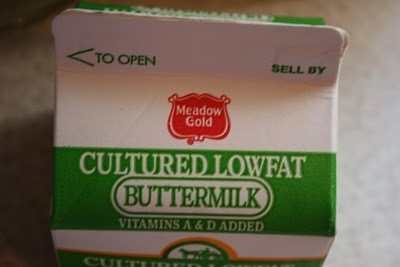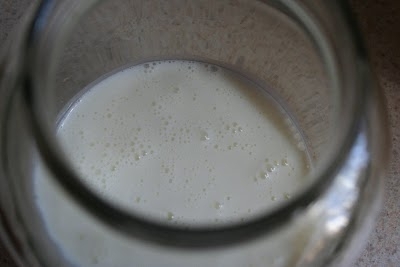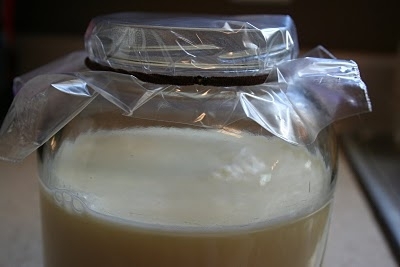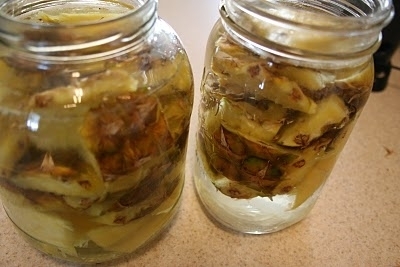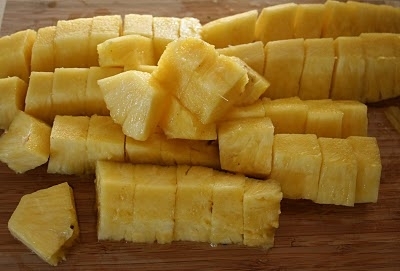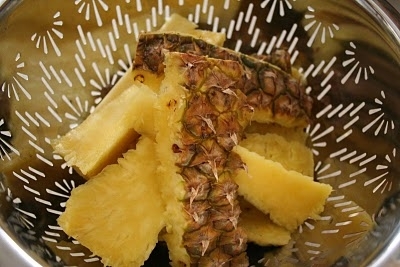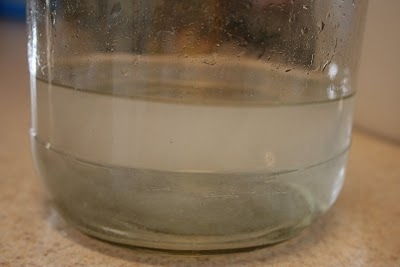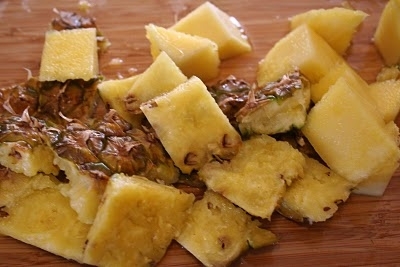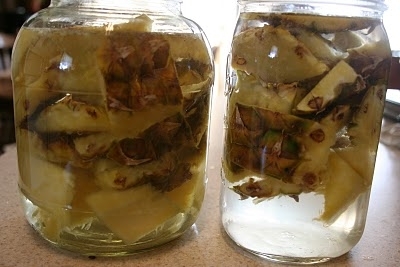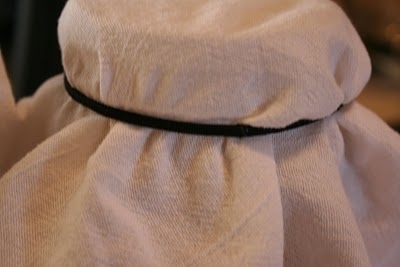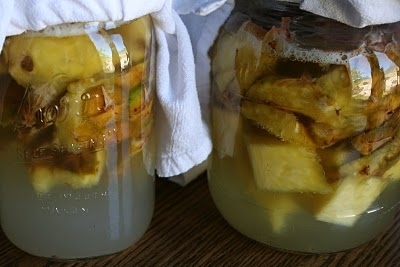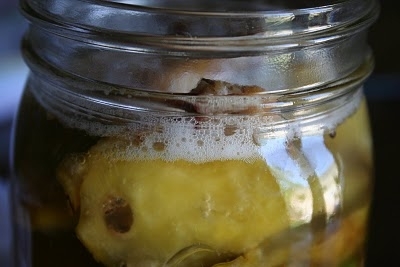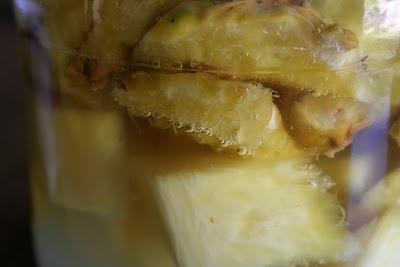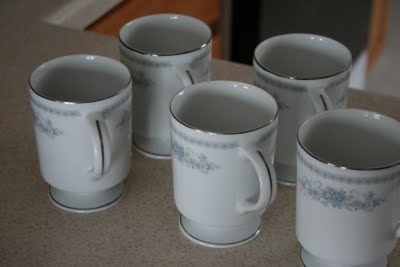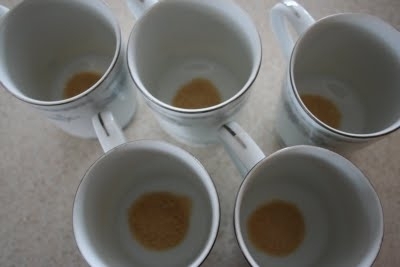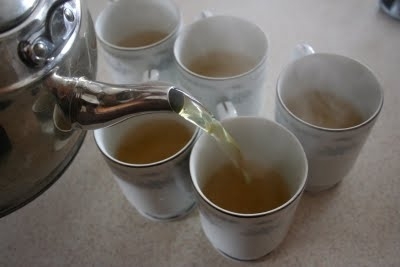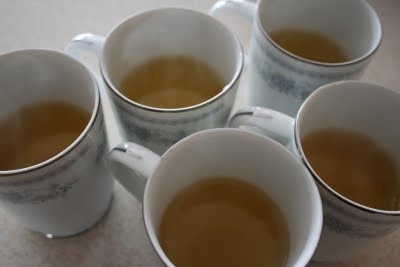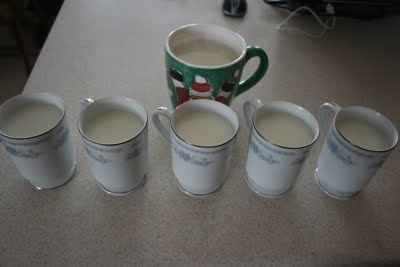We drink raw milk that comes from happy cows who eat fresh green grass all day long. Because our milk is raw, meaning it isn’t pasturised or homoginized, we get a nice thick layer of cream that rises to the top of the milk. This time of year especially the cream is thick and there is a lot, being that the cows have all calved and they are eating fast growing green grass, the milk is full of vitamins A and D and the taste is wonderful. I like to make butter with the cream, being that raw butter is actually nutritious with the combination of natural occuring fat soluable vitamins and the fat that is butter. The quickest way, I have found to make butter is with my blender, it only take a few minutes and very little work. I do have an old fashioned butter churn which I have used, but it takes a while to get butter from all the churning.
First I let my jars of cream sit out for a few hours, to bring them to room temprature. It makes the cream whip up faster, and while this step isn’t neccisary, it cut the churning time in about half. Then I add it to my hand dandy Blendtec blender (one of my favorite kitchen purchases).
I set the spead to “1” and just let it blend, it will go for about a minute then shut off, then I check it, and start it over if I need to. There have been times that I have only had do this twice, but other times (when the cream is cold) it takes several cycles.
After a couple cycles, it turns into whipped cream
One more cycle and I have butter, it is floating in buttermilk.
I then strain it, getting most of the buttermilk to save later for recipes
The buttermilk is stored in a jar in the refridgerator for a couple of days, so it can clabber and it takes on the tangy taste that we all know as buttermilk. Since my butter is sweet cream butter, the buttermilk that comes off of it tastes like skim milk. For more information on cultured buttermilk and sweet cream buttermilk, go “here“.
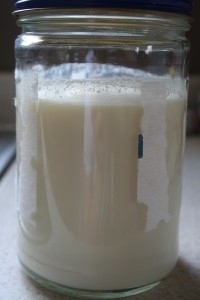
I then rinse the butter very, very well in cold water. This takes a little while, you need to get all the buttermilk out of the butter, the old buttmilk will make the butter go bad, but butter that is cleaned well lasts a long time. I usually rinse, then let it sit, stir and rinse again and let sit again, this takes maybe an hour, but it isn’t that time consuming, as I stir then let sit while I do other things.
There you have it, grass fed raw butter, beautiful and yellow. That yellow color comes from vitamin A, that the cows get from fresh greeen grass. Comercial butter that comes from corn and soy fed cows is white, and yellow coloring is added. This beautiful color comes from healthy cows eating what cows were ment to eat. The butter is then packed away in jars and stored in either the fridge of freezer to be enjoyed on potates, veggies or hot bread.

